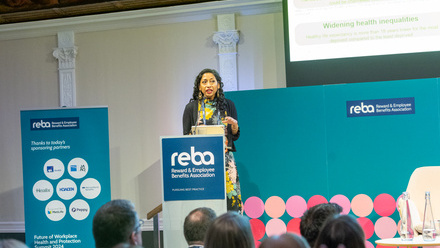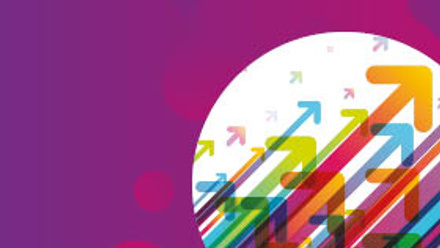How to predict future reward needs based on your current workforce
- Data analytics
- Feedback from employees
- The future of work and how this may be the key

Data Analytics
We can start with the obvious answer to the question. I would predict that all reader’s organisations will have an HR platform and many will have a benefit or reward platform too. With many of these platforms offering some form of data analytics capability or at least at a consultancy level – the answer must be in the data, or, maybe not!
Data analytics from an employee benefit standpoint has some big claims associated with it. It is of course easy to look at your current workforce demographic details and make decisions based on this data coupled with appetite for the range of benefits you offer people today (i.e. take up rates). There are a couple of fundamental flaws with this approach. Firstly, we are thankfully beginning to move past the point where employee demographic details’ are influencing our decisions. Millennials’ do not want ‘funky’ benefits – they want benefits and rewards that meet their needs, just as much as a Generation X or Baby Boomer…and to get it out of the way, the next generation will be no different! Secondly the reason data analytic predictions can be flawed is to do with outlying factors such as market trends or legislative practice. As an example, if we go back to when the now popular Corporate ISA was first predicted to be a success (over 10 years ago), it was based on the concept that a new generation of workers would want to save, but not in a way that locked in cash for retirement. We then had Auto-Enrolment – a significant legislative shift that delayed the launch of Corporate ISAs as a viable alternative until the last two years. Trends and legislation get in the way – you need to be nimble!
Feedback from employees
Now that’s more like it. Asking people what they need (the key word in the title) is vitally important. However, as with data analytics, a snapshot questionnaire once a year, or worse, every two years doesn’t really give you a view as to future needs. What can be very effective, although few companies do this well today, is to be in constant dialogue with your people to regularly assess their needs. With technology today, there is no excuse not to have the mechanism in place for a regular pulse check of your organisation to assess the needs of your people, particularly when it comes to their financial, physical, mental or social wellbeing.
By engaging with a wide and diverse range of people on a regular basis, you are getting invaluable insight as to how their needs are changing and as a result, you can start to prepare for the changes that might be needed. The further advantage of this approach is simply how tuned in your people are to market trends by the very fact they are consumers of products on a daily basis. They are using tools, apps and ‘benefits’ in their everyday lives that you will not have heard of…and if it is useful for one person, it might be useful for the many. This approach again lets you be nimble with your benefit scheme design.
The Future of Work
This is potentially the most interesting area, and the inspiration for predictions can come from a varied and diverse background. The future of work is a broad topic but we’ll focus in on a few key areas that are likely to be of significant importance in the future:
- Culture
- Employee Wellbeing
- The Conscious & Ethical Organisation.
A positive Culture is key, we all know that. However does the culture you are trying to shape in your company, get reflected in your reward and benefit programme? Rather than looking at benefits in this instance, we can look at reward elements such as your company bonus culture. Perhaps you are trying to create a culture of inclusion, a culture of fairness (for customer and employee) or perhaps be more purpose led as an organisation? Yet, your sales bonus plan is an adaption of something originally implemented in the ‘80s. It rewards purely on a revenue basis that potentially ignores the possibility that this could be unfair to clients, is only for a small group of individuals and doesn’t reward positive employee cultural behaviours such as a focus on clients and the company’s purpose and mission(s).
Employee Wellbeing is a hot topic. We can look through the wellness lens across all aspects mentioned above from financial to physical. Supporting people with stress management, their physical health and indeed, lately, their financial health which can all have a significant impact on their ability to do a job well. These are all key reasons that significant investment is being made into the wellbeing industry and business cases are being formed to implement a strategy. The only part of this that doesn’t stand up to scrutiny today is the business case aspect – it’s very difficult to align your wellbeing strategy with a genuine ROI metric. Instead, organisations should look at culture and employee wellbeing in the same conversation. The future of work means having a strong positive culture and a culture of helping people thrive – so, the business case is very simple for basing your future rewards and benefits centrally around wellbeing – is simply the right thing to do!
The conscious and ethical organisation is an interesting area that’s getting more and more attention. This is the one area that I do believe the younger generation is having a massive influence on their older generational counterparts. We have seen this shift in consumerism in the past few years with many companies suffering from the shifting conscious to doing things a better way. People in Europe switching off Facebook following the Cambridge Analytical scandal or the positive and negative impact Nike’s TV advert featuring Amercian Football star Colin Kaepernick are an example of company behaviours having a significant impact on business performance. In HR, we only need to look back recently at Google employee’s protest over the company’s handling of sexual harassment in the workplace and very recently, the amazing impact one interviewee can have by sharing their horrifying interview story on twitter to see how our people, both current and future talent, can have an impact on our businesses. In Larry Fink’s (CEO of Blackrock) recent annual letter to CEOs, he states ‘our investment stewardship team has begun to speak to companies about corporate purpose and how it aligns with culture…’ and specifically points to the fact that current and future generations will point to 'improving society’ rather than ‘generating profit’ as a primary corporate purpose they will want to be affiliated with.
Isn’t it extraordinary that we are entering an age when one of the leading financial investment institutions will value your diversity and inclusion policy, HR practices, overarching culture and purpose over 12 month financial returns. If this is a major societal change (and I am convinced of it!) then ask the question – Does you benefit and reward strategy align with being a conscious and ethical organisation? If the answer is no, then my suggestion would be that this is a key area of focus for you in the next phase of your planning!
The author is Nick McClelland, Sales & Commercial Director at JLT Employee Benefits.
This article is provided by JLT Employee Benefits.
In partnership with






